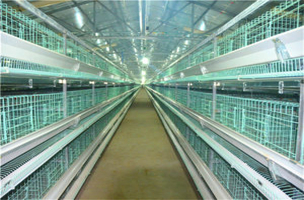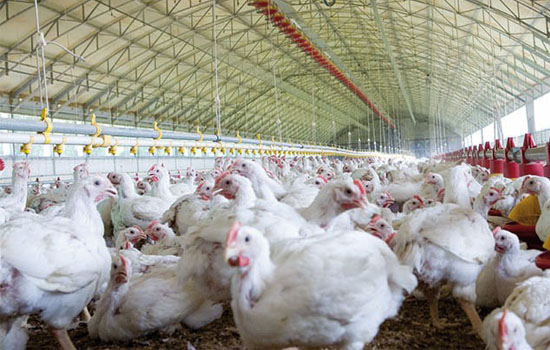How do chickens in summer cages prevent heat stress?
- Published in Chicken cages
In summer, the temperature is relatively high. For the chicken cage chicken users, it is necessary to do a good job of cooling the chicken house. Chicken battery cages have high density of chickens, and high temperatures tend to cause heat stress in chickens. Heat stress can affect the growth and production performance of egg broilers. Therefore, while the farmers are doing a good job of cooling down the summer house, they should also pay attention to prevent the phenomenon of heat stress in the chickens.
The main points of prevention and control of heat stress are:
1. Improve the environment of the house: heat stress is mainly caused by high temperature. Therefore, the main measure for farmers to control heat stress is to cool and ventilate the house. Farmers should strengthen the ventilation work for the house in time and keep it. A reasonable egg cage feeding density, you can install wet curtain equipment for the cooling of the chicken house, with ventilation equipment, the efficiency is better, can significantly reduce the temperature of the house about 10 °C.
2. Timely adjustment of feed formula: high temperature weather will affect the feed intake of chickens, and the reduction of feed intake of chickens will not meet the needs of nutrients in the body, so farmers should adjust their feeding in the summer. Increase the amount of energy and protein added to the feed, as well as add some vitamins and trace elements.

3. Change the feeding time: The average feeding time of the farmers is early, middle and late, but in summer the farmers can change the feeding time. Farmers should try not to feed the laying hens when they choose high temperature. They can choose to feed in the early morning and evening to prevent the increase of body temperature caused by eating, which will aggravate heat stress and increase the feed intake and increase accordingly. The body is resistant.
4. Adding heat-resistant stress substances: Many farmers know that vitamin C has the effect of reducing stress, so farmers can choose to add a large amount of vc (0.1-0.2g per kg of feed) to drinking water or feed. The body's ability to resist heat stress relieves the symptoms of heat stress; adding 0.2%-0.3% baking soda can reduce respiratory acidosis, improve the intestinal alkaline environment, increase the concentration of calcium ions in the blood, and increase the absorption of calcium. Improve the quality of eggshells and prevent egg yolks from licking. Some drugs with heatstroke resistance such as borneol, mint or their preparations may also be added as appropriate.
5. Supply sufficient cool drinking water: Continuously supply low-temperature well water as much as possible at high temperature. After drinking, the chicken can significantly reduce body temperature and prevent heat stress.
6. Individual treatment: In the usual feeding management of the farmers, the chickens should be observed in time, and the symptoms of heatstroke in individual chickens should be taken quickly.


